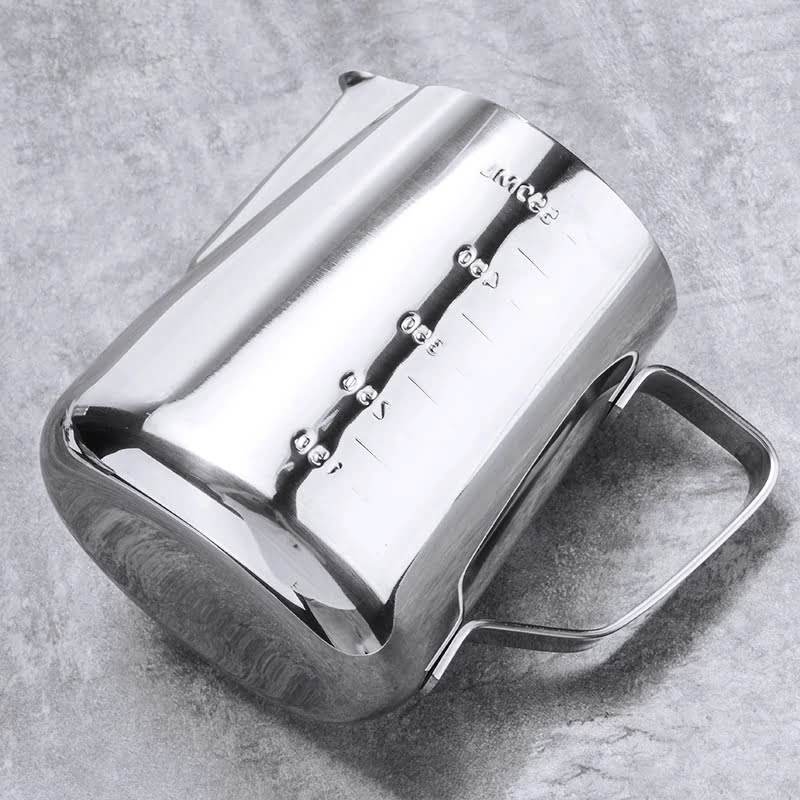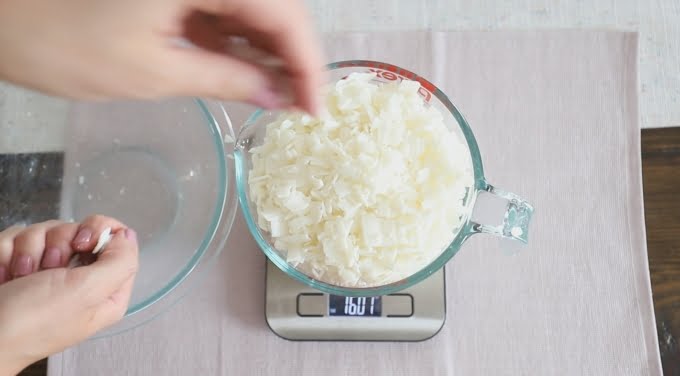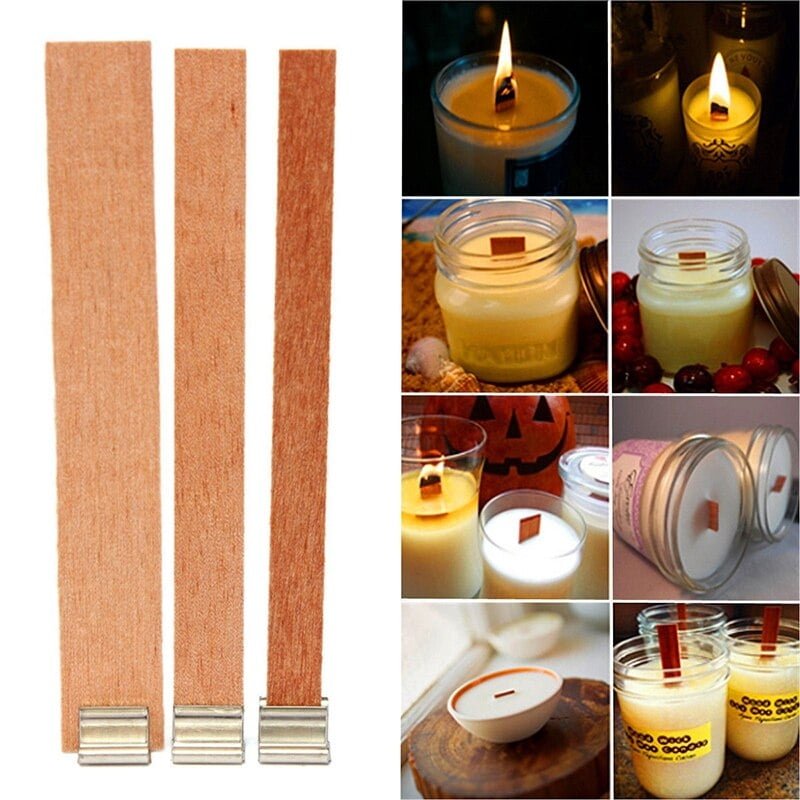In the world of candle making, there are numerous ways to add color and creativity to your creations. While traditional candle dyes are commonly used, have you ever considered the possibilities of using soap dye? This unconventional twist can bring a unique and vibrant touch to your candles, creating stunning designs that captivate the eye.
Soap dye, typically used for coloring handmade soaps, shares some similarities with candle dyes while also showcasing its own distinct characteristics. Understanding these similarities and differences is crucial in determining how soap dye can be incorporated effectively into candle making.
One of the major benefits of using soap dye in candle making is the opportunity to explore a wider range of colors compared to traditional candle dyes. Soap dyes offer an extensive palette with vibrant shades that can truly elevate your candles from ordinary to extraordinary. The versatility of soap dyes allows for endless experimentation, enabling you to create beautiful color combinations and intricate designs that appeal to different tastes and preferences.
In this article, we will delve into the art of using soap dye in candle making. We will provide step-by-step guidelines on how to incorporate soap dye effectively into your candle-making process, along with tips and tricks for maximizing its use to achieve stunning effects. Additionally, we will explore common mistakes to avoid when working with soap dye and address safety considerations for proper usage.
Get ready as we unravel the potential that lies within soap dye and showcase inspiring ideas that will ignite your creativity. Whether you’re a seasoned candle maker or just starting out on this creative journey, using soap dye in candle making opens up new horizons for extraordinary designs that will leave a lasting impression.
Understanding the Similarities and Differences
Soap dye and candle dye are both coloring agents that can be used to enhance the appearance of candles. However, there are some important differences between the two types of dyes.
Composition and Form
Soap dye is specifically formulated for use in soap making and is typically water-soluble. It is composed of colorants that are approved for use in bath and body products. Soap dyes come in liquid or powder form, and they are designed to disperse evenly in melt-and-pour or cold process soap bases.
Candle dye, on the other hand, is specifically made for candle making. It is usually oil-based or wax-based since it needs to mix well with melted wax. Candle dyes can come in various forms such as liquid dyes, block dyes, chips, or flakes.
Color Vibrancy
One key difference between soap dye and candle dye is their level of color vibrancy. Soap dyes tend to produce more muted colors compared to candle dyes. This is because soap making involves adding the dye to a small amount of liquid soap base which will later be diluted by other ingredients like oils, fragrances, and lye.
Candle dyes, on the other hand, are made to create vibrant colors that can withstand the opacity of hot melted wax. They are concentrated pigments that can produce bold and intense hues when added directly into melted candle wax.
Compatibility
While both soap dye and candle dye can be used interchangeably for certain projects, it’s important to note that not all soap dyes are suitable for use in candles. Some soap dyes may contain ingredients or additives that can affect the performance or safety of candles.
When choosing a soap dye to use in candle making, it’s crucial to ensure that it is labeled as safe for candles. Look for indications such as “candle-safe” or “wax-compatible” on the packaging to make sure you are selecting a dye that is specifically formulated for candle making.
Understanding the similarities and differences between soap dye and candle dye is essential when considering their use in candle making. By knowing their unique characteristics, you can make informed decisions about which type of dye to incorporate into your candle creations.
Benefits of Using Soap Dye in Candle Making
When it comes to candle making, there are various ways to add color and create unique designs. One option that may not immediately come to mind is using soap dye. Soap dye, typically used for coloring soap, can actually be a fantastic alternative for adding vibrant hues and interesting effects to your candles. In this section, we will explore the benefits of using soap dye in candle making and how it can provide a unique twist to enhance your creations.
One of the key benefits of using soap dye in candle making is the wide range of colors available. Soap dyes come in numerous shades, from bold and bright to pastel or earthy tones. This gives you plenty of options to experiment with and allows you to create candles that truly stand out.
Another advantage of using soap dye is its compatibility with different types of wax. Whether you prefer soy wax, beeswax, or paraffin wax, soap dye can easily be incorporated into any type without affecting the quality or performance of the finished product. This versatility allows for greater creativity and freedom in designing your candles.
Additionally, soap dye offers excellent color retention when used in candles. The pigments are specifically formulated to withstand high temperatures without fading or bleeding. This means that even after hours of burning, your candles will maintain their vibrant colors and continue to impress.
To summarize, using soap dye in candle making opens up a world of possibilities for creating visually stunning and unique candles. With a wide range of colors available, compatibility with different types of wax, and excellent color retention properties, soap dye is an exciting choice for candle makers who want to take their creations to the next level.
| Benefits | Description |
|---|---|
| Wide Range of Colors | Soap dyes offer numerous shades to experiment with, allowing for unique and eye-catching candle designs. |
| Versatility | Soap dyes can be easily incorporated into different types of wax without compromising the quality or performance of the candles. |
| Excellent Color Retention | The pigments in soap dye are formulated to withstand high temperatures, ensuring that the colors of your candles remain vibrant even after hours of burning. |
Step-by-Step Guide
Gather Your Materials
Before you begin incorporating soap dye into your candle making process, it is important to gather all the necessary materials. These include:
- Soap Dye: Choose a high-quality soap dye that is specifically formulated for candle making. It should be oil-based and safe to use in wax.
- Wax: Select the type of wax that you prefer for your candles, such as soy wax or beeswax.
- Candle Wicks: Choose wicks that are appropriate for the size and type of candles you plan to make.
- Fragrance or Essential Oils (Optional): If desired, select fragrance or essential oils to add scent to your candles.
- Heat Resistant Containers: Decide on the containers or molds you will use to create your candles.
- Double Boiler or Melting Pot: Use a double boiler or melting pot specifically designed for candle making to melt the wax safely and evenly.
Prepare Your Workstation
Creating beautiful candles with soap dye requires an organized and well-prepared workstation. Here are some steps to prepare your workspace:
- Clean and dry the area where you plan to work, ensuring it is free from any flammable items or clutter.
- Place a heat-resistant surface, such as a silicone mat or aluminum foil, on your work area to protect it from any spills or drips during the candle-making process.
- Set up your double boiler or melting pot on a heat source and ensure it is stable and secure.
- Arrange all your materials within easy reach so that they are readily available when needed during the candle-making process.
Mixing Colors
To incorporate soap dye into your candles, you will first need to mix colors based on your desired outcome. Here’s how:
- Start by identifying the colors you want to achieve in your candles and collect the necessary soap dyes.
- Begin with a small amount of wax in a separate container and add tiny drops of soap dye. Mix thoroughly to incorporate the color evenly.
- Adjust the color intensity by adding more or fewer drops of soap dye until you achieve your desired shade.
- Once you’re satisfied with the color, take note of the proportions used for future reference when creating larger batches of candles.
By following this step-by-step guide, you can successfully incorporate soap dye into your candle making process and create unique and vibrant candles that will impress friends, family, or customers. Experiment with different color combinations and techniques to unleash your creativity and make truly one-of-a-kind candles.
Exploring Color Combinations
Creating vibrant and eye-catching candle designs is a great way to add a unique touch to your homemade candles. One way to achieve this is by exploring different color combinations using soap dye. Soap dye can bring a whole new level of creativity and excitement to your candle making process. Here are some tips and ideas on how to create stunning candle designs with the use of soap dye.
- Experiment with different color combinations: Soap dye comes in a wide range of colors, allowing you to create endless possibilities when it comes to designing your candles. Try experimenting with complementary colors, such as pairing blue and orange or green and purple, for an eye-catching contrast. You can also try blending different shades of the same color to create a gradient effect or opt for monochromatic designs for a more minimalist look.
- Use multiple colors in one candle: Don’t limit yourself to just one color. Create visually striking candles by incorporating multiple colors into your design. Consider layering different colored waxes or creating swirl patterns by pouring different colored wax simultaneously into your container. This will give your candles a dynamic and captivating appearance.
- Combine soap dye with other decorative elements: Soap dye works well in combination with other decorative elements such as glitter, dried flowers, or even embedded objects like seashells or beads. Combine these elements with various colored layers or mix them directly into the wax before pouring it into the mold to create stunning visual effects that will captivate anyone who sees your finished candle.
To start experimenting with color combinations using soap dye in candle making, follow these steps:
- Prepare all the necessary materials and ingredients including wax, fragrance oil, wicks, containers, and soap dyes.
- Melt the wax following the instructions provided by the manufacturer.
- Once melted, add a few drops of soap dye into the wax at a time until you achieve your desired color intensity.
- Stir thoroughly to distribute the color evenly throughout the wax.
- Add fragrance oil if desired and mix well.
- Pour the colored wax into your chosen container or mold and allow it to cool and set.
- Repeat the process with different colors, layers, or decorative elements to create beautiful and vibrant candle designs.
By utilizing soap dye in your candle making process, you can create candles that are not only functional but also visually stunning. Whether you prefer bold and vibrant hues or subtle and pastel shades, the possibilities are endless with soap dye. Get creative, experiment with different color combinations, and let your imagination run wild to design vibrant and eye-catching candles that will delight anyone who sees them.
Tips and Tricks
Using soap dye in candle making can add a unique twist and enhance the overall look of your creations. Here are some tips and tricks to help you maximize the use of soap dye for stunning candle effects:
- Start with small amounts: Soap dyes are highly concentrated, so a little goes a long way. It’s important to start with small amounts and gradually add more if desired. This will prevent overpowering the color and creating an unnatural hue.
- Mix colors for custom shades: One of the advantages of using soap dye is its ability to easily mix and create custom colors. Experiment with different combinations to achieve unique shades that complement your candles. Consider using an HTML unordered list to list popular color combinations or provide examples.
- Use a toothpick for precision: Soap dye can be quite potent, so it’s essential to have control over the amount used. Instead of pouring directly from the bottle, dip a toothpick into the dye and then transfer it into your melted candle wax. This method allows for precise control when adding color and prevents accidental spills or overwhelming hues.
- Layer colors for depth: Another technique to create stunning effects is by layering different colors within your candles. Begin by pouring one color into the mold, allow it to partially set, then pour another contrasting or complementary color on top. This layering technique adds depth and visual interest to your finished candles.
- Different techniques for different effects: Depending on the effect you want to achieve, there are various techniques you can explore with soap dyes. For example, if you want a marbled effect, swirl two or more colors together gently using a skewer or toothpick before the wax sets completely.
By incorporating these tips and tricks into your candle making process, you can maximize the use of soap dye to create stunning effects that will impress friends, family, or customers alike.
Common Mistakes to Avoid
Choosing Incompatible Dye Types
One common mistake that candle makers make when using soap dye in their creations is choosing incompatible dye types. While soap dye and candle dye may seem similar, it is important to remember that they are formulated for different purposes. Soap dyes are specifically designed for use in soapmaking, while candle dyes are specially made to be used in candles.
Using soap dye in candle making without considering the compatibility of the dyes can lead to unsatisfactory results. Soap dyes may not blend well with the wax and can result in poor color dispersion or uneven coloring of the candles. Additionally, some soap dyes may have ingredients or additives that are not safe to burn, which could potentially create a safety hazard when used in candles.
To avoid this mistake, it is crucial to choose dyes that are specifically formulated for candle making. These dyes are designed to work harmoniously with the wax, ensuring vibrant and evenly colored candles. It is recommended to purchase candle dyes from reputable suppliers who specialize in products for candle making.
Overusing Soap Dye
Another mistake novices often make when incorporating soap dye into their candle making process is overusing the dye. Since soap dyes tend to be more concentrated than traditional candle dyes, it can be easy to go overboard with the amount of dye added to the wax.
Using an excessive amount of soap dye can result in overpowering colors that may appear unnatural or even bleed onto other surfaces when the candles are burned. This can diminish the overall quality and aesthetics of your creations.
To avoid this mistake, it is essential to start with small amounts of soap dye and gradually add more until you achieve your desired color intensity. It is better to err on the side of caution and add less initially rather than risk using too much dye at once.
Inadequate Mixing Time
Improper mixing is another common mistake that can occur when using soap dye in candle making. Soap dyes often require more thorough mixing compared to traditional candle dyes due to their formulation.
If the dye is not sufficiently mixed into the melted wax, it can result in inconsistent coloring and streaks in the finished candles. This can be particularly noticeable with certain colors such as red or black.
To avoid this pitfall, ensure that you mix the dye thoroughly into the melted wax. Use a stirring utensil or mixer to incorporate the dye evenly throughout the wax before pouring it into your candle molds. Taking your time during this step will help ensure that your candles have a uniform and vibrant color.
Safety Considerations
When incorporating soap dye into your candle making process, it is crucial to prioritize safety to ensure a smooth and hazard-free experience. While soap dye is generally safe to use in candle making, there are some considerations and precautions that should be taken. Here are some important safety guidelines to follow:
- Choose high-quality soap dyes: It is essential to select soap dyes specifically formulated for candle making. These dyes are designed to withstand higher melting points and will disperse evenly throughout the wax, resulting in vibrant coloration. Using unsuitable dyes can lead to poor color distribution or even potential hazards such as uneven burning or discoloration of the wax.
- Follow manufacturer’s instructions: Always read and understand the manufacturer’s instructions before using any soap dye in your candle making process. Each product may have specific guidelines for usage, such as recommended usage rates or temperature limitations. Adhering to these instructions will not only ensure optimal results but also minimize any potential risks.
- Protect yourself and your workspace: Like any crafting activity, it is important to protect yourself and your workspace while working with soap dye. Wear gloves, goggles, and protective clothing to prevent skin contact and eye irritation. Cover surfaces with newspapers or plastic sheets to avoid staining or damage from spillage.
- Be cautious with fragrance oils: If you plan on using fragrance oils along with soap dye in your candles, do thorough research to ensure they are compatible with each other. Some fragrance oils may contain ingredients that could react with certain dyes, causing them to fade or change color when exposed to heat.
- Proper ventilation is key: It is highly recommended to work in a well-ventilated area when using soap dye in candle making. This will help dissipate any fumes emitted during the melting and mixing process, ensuring a safe breathing environment for you.
By following these safety considerations, you can confidently incorporate soap dye into your candle making process, knowing that you are taking the necessary precautions to protect yourself and create beautiful, vibrant, and safe candles. Remember, safety should always be a top priority when crafting any homemade products.
FAQs
When it comes to using soap dye in candle making, many beginners and experienced candle makers alike may have questions about its usage and effects. In this section, we will answer some of the most commonly asked questions regarding the use of soap dye in candle making.
- Can I use soap dye in any type of candle wax?
- Will soap dye affect the burn time or scent throw of my candles?
- How do I incorporate soap dye into my candle-making process?
- Can I mix different colors of soap dye to create new shades?
- Will soap dye bleed or fade over time?
- Are there any special considerations when cleaning up after using soap dye?
Yes, you can use soap dye in a wide range of candle waxes, including soy wax, paraffin wax, beeswax, and coconut wax. Soap dye is compatible with both natural and synthetic waxes, allowing you to experiment with different types of candles.
Soap dye is known for its minimal impact on the burn time and scent throw of candles compared to other dyes. However, it is important to note that overdosing your candles with any type of dye can affect their performance. It is always recommended to follow the manufacturer’s guidelines and conduct small test batches when using soap dye for the first time.
Soap dyes can be added during different stages of the candle-making process. For solid-colored candles, you can add the dye directly into the melted wax before pouring it into your chosen container or mold. If you prefer a marbled or swirl effect, you can add drops of soap dye directly onto the surface of the melting wax and gently stir it in for a marbling effect.
| Question | Answer |
|---|---|
| Can I use soap dye in any type of candle wax? | Yes, you can use soap dye in a wide range of candle waxes. |
| Will soap dye affect the burn time or scent throw of my candles? | Soap dye is known for its minimal impact on the burn time and scent throw of candles. |
| How do I incorporate soap dye into my candle-making process? | Soap dyes can be added during different stages of the candle-making process. |
Yes, one of the advantages of using soap dye in candle making is that you can mix different colors to create custom shades. By experimenting with various ratios and combinations, you can achieve unique and vibrant colors for your candles.
Soap dye is generally more stable than other types of dyes, but it is still important to consider factors such as heat exposure, sunlight, and fragrance oils used in your candles. To preserve the color integrity, it is recommended to store your finished candles in a cool and dry place away from direct sunlight.
Soap dye can stain surfaces and fabrics, so it is important to clean up any spills or drips immediately using warm soapy water. It is also advisable to wear gloves and protective clothing while handling concentrated soap dyes to avoid skin contact.
By addressing these frequently asked questions about using soap dye in candle making, you can gain a better understanding of how this versatile coloring option can enhance your candle creations.
| Question | Answer |
|---|---|
| Can I mix different colors of soap dye to create new shades? | Yes, one of the advantages of using soap dye in candle making is that you can mix different colors to create custom shades. |
| Will soap dye bleed or fade over time? | Soap dye is generally more stable than other types of dyes, but it is still important to consider factors such as heat exposure, sunlight, and fragrance oils used in your candles. |
| Are there any special considerations when cleaning up after using soap dye? | Soap dye can stain surfaces and fabrics, so it is important to clean up any spills or drips immediately using warm soapy water. |
Inspiring Ideas
Candle making is an art form that allows for endless creativity and personalization. One way to take your candle designs to the next level is by incorporating soap dye into your creations. Soap dye can add vibrant colors and stunning effects that are sure to catch the eye. In this section, we will showcase some inspiring ideas and examples of stunning candle designs made with soap dye.
One popular technique is to candle/” target=”_blank” rel=”follow noopener”>create layered candles using different colors of soap dye. This creates a beautiful ombre effect, with each layer blending seamlessly into the next. For example, you can start with a deep blue at the bottom of the candle, fade into a lighter turquoise in the middle, and finish with a pale sky blue at the top. The result is a visually striking candle that looks like it was plucked straight from the ocean.
Another idea is to use soap dye to create marbled or swirled patterns on your candles. This can be achieved by adding drops of different colored dyes onto the melted wax and gently swirling them together with a skewer or toothpick before letting the wax set. The end result is a unique and mesmerizing design that resembles marble or tie-dye.
If you’re feeling adventurous, you can even try creating multi-colored candles using different shades of soap dye within one candle. For example, you can make a rainbow-inspired candle by pouring layers of red, orange, yellow, green, blue, indigo, and violet wax one after another. The final product will be a true work of art that showcases a beautiful array of colors.
| Design | Description |
|---|---|
| Ocean Waves | This design features layers of deep blue, turquoise, and sky blue, creating a candle that resembles the gentle waves of the ocean. |
| Marble Swirl | This design showcases a swirling pattern created by combining drops of different colored dyes, resulting in a beautiful marble-like effect. |
| Rainbow Blend | This candle features layers of wax in all the colors of the rainbow, creating a vibrant and eye-catching centerpiece. |
These are just a few examples of the stunning candle designs you can create by incorporating soap dye into your candle making process. So let your creativity flow and experiment with different color combinations and techniques to create your own unique and beautiful candles.
Conclusion
In conclusion, incorporating soap dye into candle making opens up a whole new realm of possibilities for creative enthusiasts. By understanding the similarities and differences between soap dye and candle dye, individuals can experiment with unique color combinations to create vibrant and eye-catching candle designs.
One of the main benefits of using soap dye in candle making is the opportunity to add a unique twist to enhance your creations. Soap dyes often offer a wider range of vibrant colors and can produce stunning effects when layered or blended together. Whether you prefer pastels, neons, or bold shades, soap dye provides endless options for creating candles that stand out.
To successfully incorporate soap dye into your candle making process, follow a step-by-step guide that ensures proper usage and maximizes its effects. Additionally, take advantage of handy tips and tricks to elevate your skills and create stunning candle designs. This includes experimenting with different techniques such as marbling or ombre effects to achieve truly remarkable results.
While working with soap dye in candle making offers immense creative potential, it is important to be aware of common mistakes to avoid and ensure safety considerations are taken into account. This includes using proper ventilation when working with dyes and following guidelines for handling and storing them appropriately.
Unlocking new possibilities in candle making with soap dye is an exciting venture that can lead to spectacular creations. By exploring inspiring ideas showcased by others who have experimented with soap dye, you will be inspired to push your own boundaries and create candles that are truly works of art. So go ahead, dive into the world of soap dyes in candle making and unleash your creativity today.
Frequently Asked Questions
Can you use glycerin soap colors in candles?
It is generally not recommended to use glycerin soap colors in candles. While both soap and candles are made from similar ingredients such as oils or waxes, the dyes used in glycerin soap are specifically formulated for the different chemical properties of soap.
Glycerin soap colors may not mix well with candle wax, and they may not produce the desired color or opacity in a candle. It is better to use dyes that are specifically designed for use in candles to achieve the best results.
Can you use any dye for candles?
You cannot use any dye for candles as different dyes have specific properties that may or may not be suitable for candlemaking. When choosing a dye for candles, it is important to select one that is specifically formulated for this purpose.
Candle dyes are typically made from oil-soluble and heat-resistant pigments, allowing them to dissolve well in molten wax and maintain their color even at high temperatures. Other types of dyes, such as water-based or food coloring, may not mix properly with wax and could result in poor color distribution or fading.
What can I use instead of dye for candle?
If you’re looking for an alternative to using dye for your candle, there are various natural options available. One popular choice is using botanical materials such as dried flowers, herbs, spices, or even fruit peels to add color and texture to your candles. These natural elements can give your candles a unique and organic look while also infusing them with subtle scents when melted.
Another option is experimenting with different types of wax that already have some inherent color, such as beeswax which has a warm yellow hue. By utilizing these alternatives, you can create visually interesting and eco-friendly candles without relying on synthetic dyes.

Welcome to my candle making blog! In this blog, I will be sharing my tips and tricks for making candles. I will also be sharing some of my favorite recipes.





